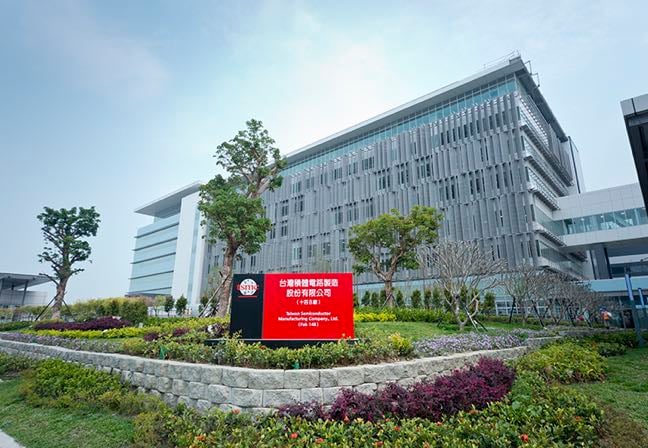Analysis TSMC has confirmed it will build not one, but two advanced chip manufacturing plants in Arizona, more than tripling the Asian foundry giant’s original investment to $40 billion, even though the company has complained about the US project becoming a major headache for multiple reasons.
The Taiwanese contract chipmaker said on Tuesday it plans to construct a second fab in Phoenix, Arizona, that will produce 3nm chips when it goes online in 2026. This is in addition to the previously announced fab set for 2024 operation that is now set to manufacture 4nm silicon wafers, not 5nm as originally intended, the company said in today’s update.
This will cost roughly $40 billion for TSMC — which counts Apple, Nvidia, and AMD as major customers — far greater than the initial $12 billion investment it originally planned. The change-up happened after Apple, Nvidia, and AMD reportedly pushed TSMC to offer more advanced 4nm chips over 5nm in the US.
President Joe Biden is expected to hail TSMC’s increased spending as a significant win for US efforts to make the country a leader in chip manufacturing again and reduce the world’s reliance on chipmakers in Asia, where most semiconductor production happens now, according to The Financial Times.
TSMC announced the expanded US investment, despite recent comments from the company that it faces significant hurdles in making the advanced fabs fully operational.
In a letter to the US Commerce Department last month, the company said the hurdles include a shortage of skilled workers, high costs, and unexpected construction issues that have popped up for its first plant in Arizona, according to The Wall Street Journal.
“A range of construction costs and project uncertainty in Phoenix makes building the same advanced logic wafer fab in Taiwan considerably less capital intensive,” the company was quoted as saying.
TSMC’s Taiwanese output will dwarf US presence, despite new investments
While TSMC’s move may seem like big news in the US, there are a few reasons to temper the excitement.
For one, the two fabs in Arizona combined are expected to produce over 600,000 wafers per year. That will be a tiny fraction of TSMC’s total manufacturing output in Taiwan of more than 2 million wafers per month between the company’s mature and advanced nodes, said Wang Mei-hua, Taiwan’s minister of economic affairs, according to a recent Chinese-language news story.
Taiwanese research firm TrendForce said that TSMC’s US expansion will only shift the company’s American output from 1 percent in 2022 to 3 percent in 2025. Meanwhile, the percentage of wafers produced in Taiwan by TSMC will go from 93 percent to 88 percent over the same period.
#TrendForce‘s data indicate #TSMC has just 1% of its foundry capacity in the US. Analyst Joanne Chiao believes changes in capacity distribution will be limited in the short term. pic.twitter.com/fvCGN2BEFT
— TrendForce (@trendforce) December 6, 2022
Another important thing to consider is that TSMC’s 4nm and 3nm fabs in the US will not represent the company’s most advanced capabilities when they go online in 2024 and 2026, respectively.
After all, the company said in recent months that it has already ramped up 4nm manufacturing, and it remains on track to begin volume production of 3nm chips by the end of the year [PDF]. And then there’s the fact that TSMC plans to start production of 2nm chips in Taiwan by the end of 2025, before the company’s 3nm plant in the US even goes online.
This apparently represents TSMC’s strategy to keep its American fabs perpetually behind its Taiwan plants in advanced chip-making capabilities. One person close to TSMC characterized this strategy as “N minus 1,” according to The Financial Times.
The result is that Taiwan will continue to lead in TSMC’s advanced chip-making capabilities and capacity for the years to come. And yet the company hopes it can grab a piece of the $52 billion in US chip manufacturing subsidies that were approved by Congress a few months ago as part of the CHIPS and Science Act.
How Intel and Samsung could help US chip-making goals
The two other companies that could help the US make meaningful progress in advanced chip-making capabilities and capacity are Intel and Samsung.
Intel is currently in the process of building advanced fabs in Arizona and Ohio that are expected to go online in 2024 and 2025, respectively. Samsung, in the meantime, is working on a state-of-the-art facility in Texas set for 2024 operation that could see a major expansion over the next several years.
Intel’s contributions, however, are predicated on the company accomplishing two major goals as part of its ambitious comeback plan: exceeding foundry rivals TSMC and Samsung in process performance by 2025, and building a substantial contract chip manufacturing business.
The x86 giant said on Monday that it remains on track to become the world’s most advanced chipmaker in three years.
While that will allow Intel to compete better against chip design rivals like Nvidia and AMD, the company’s manufacturing advances will have a larger impact if it can convince a meaningful number of companies to back its revitalized contract chip-making division, Intel Foundry Services.
The head of Intel Foundry Services, who announced his resignation a couple of weeks ago, recently said Intel hopes to eclipse Samsung’s foundry revenue by 2030, which would make the company the second-largest contract chip manufacturer at that point.
However, Intel’s foundry business is still in its early days, as it only constitutes a tiny percentage of total revenue right now. And the division’s success at least in part relies on Intel winning contracts from some of its major chip design rivals.
Those challenges, along with TSMC’s Taiwan-first plan, are all reasons why Mei-hua, Taiwan’s minister of economic affairs, recently said the island nation doesn’t have to worry anytime soon about America’s growing chip-making footprint. ®



